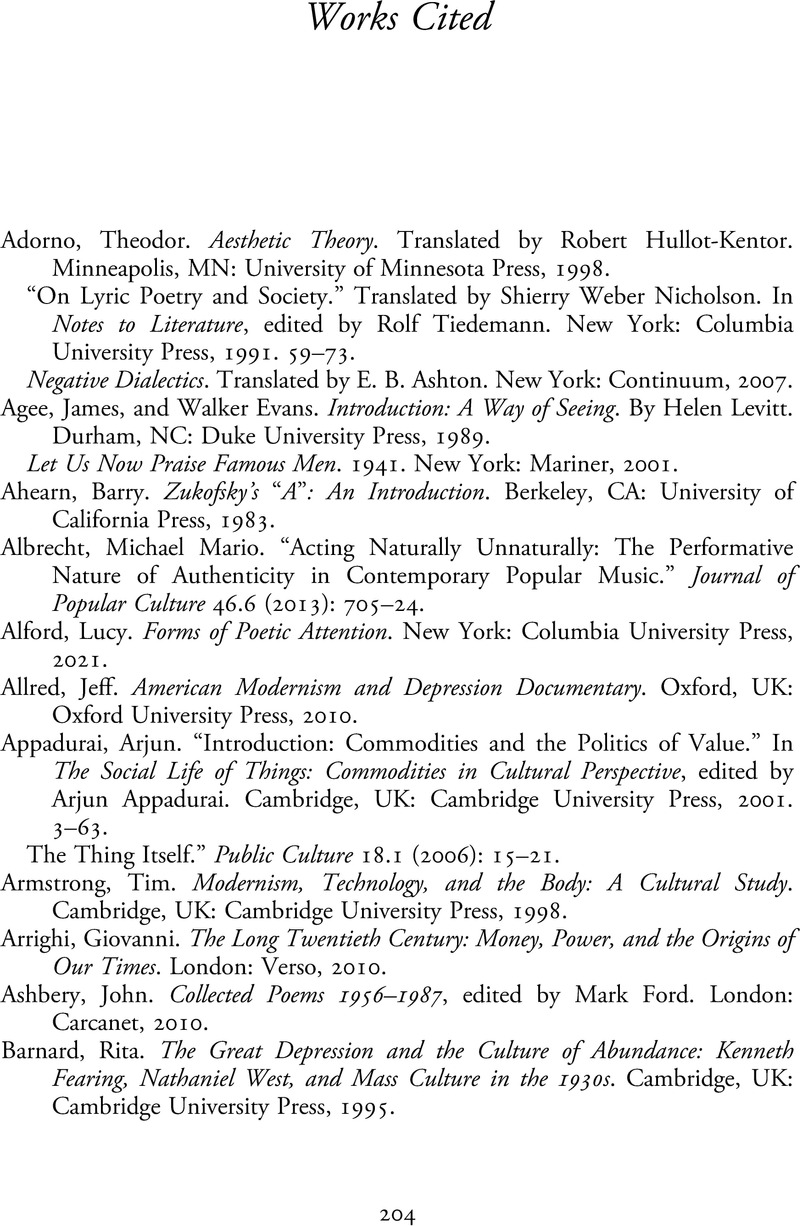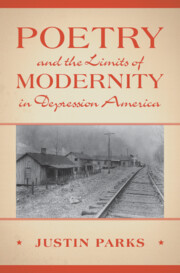Book contents
- Poetry and the Limits of Modernity in Depression America
- Cambridge Studies in American Literature and Culture
- Poetry and the Limits of Modernity in Depression America
- Copyright page
- Dedication
- Contents
- Illustrations
- Acknowledgments
- Introduction
- Part I Historical Materialism and the Materials of History
- Part II Ethnographic Modernity and Its Discontents
- Notes
- Works Cited
- Index
- Recent Books in this Series (continued from page ii)
- References
Works Cited
Published online by Cambridge University Press: 21 September 2023
- Poetry and the Limits of Modernity in Depression America
- Cambridge Studies in American Literature and Culture
- Poetry and the Limits of Modernity in Depression America
- Copyright page
- Dedication
- Contents
- Illustrations
- Acknowledgments
- Introduction
- Part I Historical Materialism and the Materials of History
- Part II Ethnographic Modernity and Its Discontents
- Notes
- Works Cited
- Index
- Recent Books in this Series (continued from page ii)
- References
Summary

- Type
- Chapter
- Information
- Poetry and the Limits of Modernity in Depression America , pp. 204 - 218Publisher: Cambridge University PressPrint publication year: 2023



